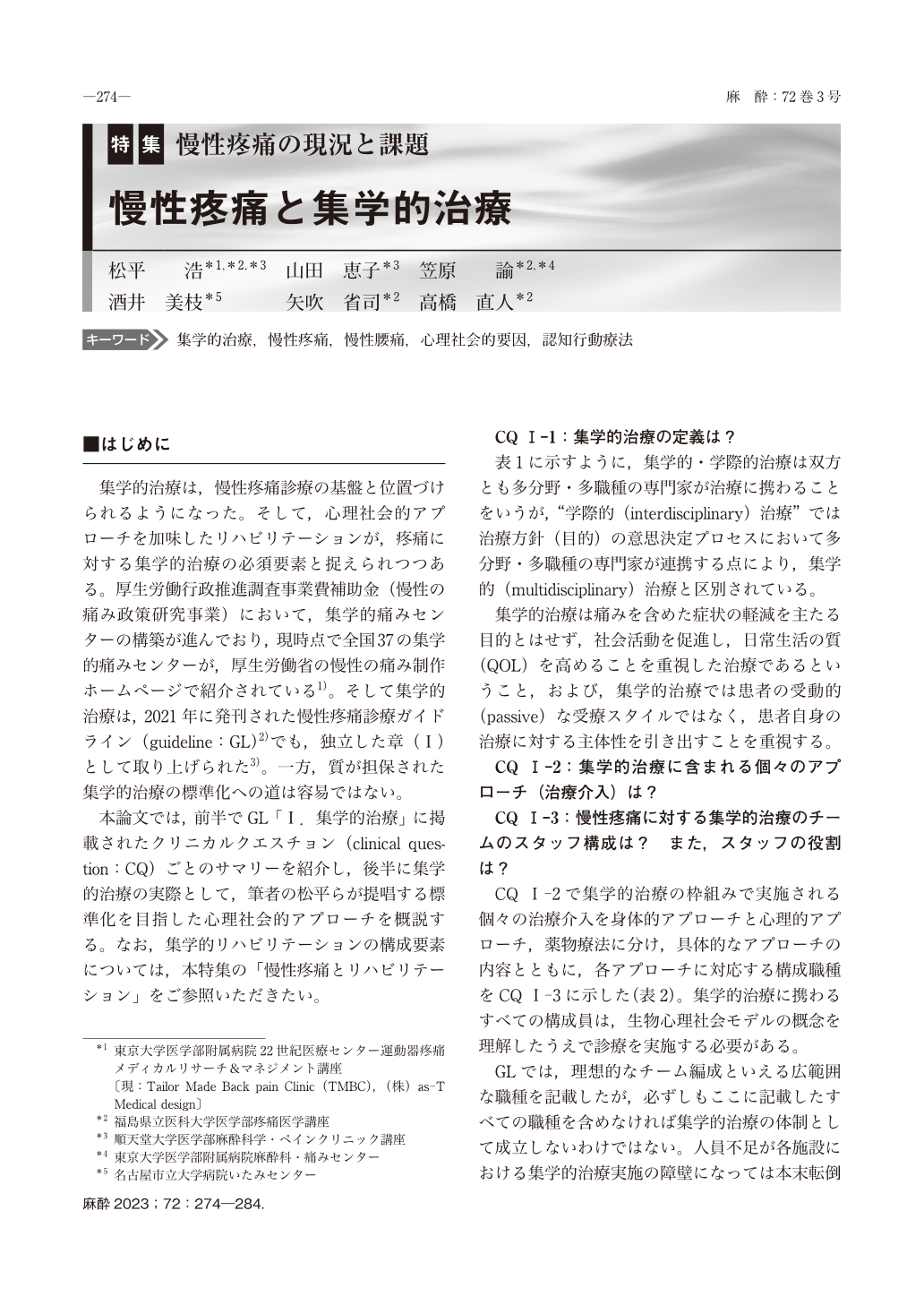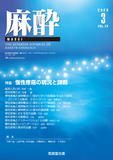Japanese
English
- 有料閲覧
- Abstract 文献概要
- 1ページ目 Look Inside
- 参考文献 Reference
はじめに
集学的治療は,慢性疼痛診療の基盤と位置づけられるようになった。そして,心理社会的アプローチを加味したリハビリテーションが,疼痛に対する集学的治療の必須要素と捉えられつつある。厚生労働行政推進調査事業費補助金(慢性の痛み政策研究事業)において,集学的痛みセンターの構築が進んでおり,現時点で全国37の集学的痛みセンターが,厚生労働省の慢性の痛み制作ホームページで紹介されている1)。そして集学的治療は,2021年に発刊された慢性疼痛診療ガイドライン(guideline:GL)2)でも,独立した章(Ⅰ)として取り上げられた3)。一方,質が担保された集学的治療の標準化への道は容易ではない。
本論文では,前半でGL「Ⅰ.集学的治療」に掲載されたクリニカルクエスチョン(clinical question:CQ)ごとのサマリーを紹介し,後半に集学的治療の実際として,筆者の松平らが提唱する標準化を目指した心理社会的アプローチを概説する。なお,集学的リハビリテーションの構成要素については,本特集の「慢性疼痛とリハビリテーション」をご参照いただきたい。
Psychosocial factors are often involved in a chronic pain patient, in which case an accurate assessment of these factors and a corresponding cognitive-behavioral approach are required. Multidisciplinary treatment based on a biopsychosocial model is essential in the treatment of chronic pain such as musculoskeletal pain. First, we described an overview of “Ⅰ. Multidisciplinary Treatment” in the Japanese Clinical Practice Guidelines for the management of chronic pain 2021. Subsequently, we introduced an original psychosocial flags system for Japanese workers that was developed by members of the Ministry of Health, Labour and Welfare’s Policy Research Project on chronic pain. The “psychosocial flags framework” was originated from the U. K. for the multidisciplinary treatment for musculoskeletal pain, which was recommended in neck and back pain guidelines in Europe. We focused on the yellow flags(i.e., psychosocial factors used for screening cognitive-behavioral therapy)that will be an appropriate Operation System for motivated therapists.

Copyright © 2023 KOKUSEIDO CO., LTD. All Rights Reserved.


